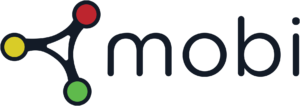
Survival in the natural world depends upon an ability to quickly assess environmental conditions and adapt to those conditions in real-time to make the right decisions. As we observe in nature, business organizations also survive and excel by analyzing data across complex ecosystems of nodes, relationships, and interactions. They adapt quickly to emergent properties dictated by the business environment in order to draw the right conclusions and make the right decisions.
What we see in the business world mirrors what we see in nature – as above, so below. This reflects the universal need to consider all conditions and variables in decision analysis. The ability to do so provides advantage to businesses in industry just as it does to grazers in the Savanna.
In the current state of data technology, data stores are neither comprehensive nor adaptive. Queries written to specific databases do not leverage the entire set of available databases and other repositories available throughout the enterprise. Therefore, although the answer to a basic question may reside in the enterprise, the query will never know. At the same time, applications query sets of pre-defined data sources, each of which is designed with a bespoke context that often constrains the utility of the data. Targeted, bespoke data sources often are designed with specific capabilities in mind, and don’t model data to necessarily be interoperable/usable externally. Further, when data schemas change, application logic (e.g., business rules) and presentation logic also must adapt and change, often at prohibitive expense. This brittle point-to-point architecture constrains decision analysis, delays product delivery, and greatly increases labor costs.
To address this problem, many organizations aggregate data in warehouses and data lakes. However, the data lake is merely a large-scale data silo—fragile integration points, continual Extract-Transform-Load (ETL) operations, baked-in queries and rigid application logic. Data lakes are time-consuming to create and maintain, and quality is difficult to control. Provenance and lineage are difficult to track, eroding trust in query results. Data currency becomes problematic as source data evolves in real-time. New sources of data require extensive engineering to bring them “online”. While data lakes offer access to more data, they use the same brittle, point-to-point data architecture——a high-cost, low-value data integration approach.
Built on graph data technology, Mobi’s data integration capability adapts to the continuously evolving enterprise by: 1) applying user-defined models to synchronize abstract concepts and physical data sources; 2) supporting interoperability and self-maintaining applications; and 3) easily incorporating new data sources and data concepts. Mobi leverages both human and machine capabilities to access, harmonize and consolidate data to answer enterprise-level questions.
Mobi connects data from disparate sources across the enterprise to help discover unique, business-relevant relationships that support advanced decision-making. This eliminates latency, increases the quality and trust of results, accelerates decisive action, and provides more value at less cost than traditional data management practices.
Unlike traditional database management systems (DBMS), Mobi persists relationships and interactions throughout the data lifecycle—from concept, to design in logical models, to implementation in physical models, to persistence within a scalable, reliable database system and finally to applications, interfaces and last-mile analytics.
A semantic layer enables user-defined and system-generated data models to specify the meaning of data and its relationships to other data in a manner that automatically synchronizes understanding across organizational boundaries. For example, the semantic model can harmonize the meaning of a concept like “target” among the finance analyst and intelligence analyst who each interpret the concept differently for their own purposes. This also provides a machine-interpretable data model that enables new data to be inferred from existing data; in other words, making implicit data explicit. For example, machines may infer relationships (i.e., discover dependencies) between components that may not be obvious to humans or current analytics—establishing a solid foundation for machine learning and artificial intelligence.
Mobi’s open and non-proprietary technology enables collaborative analysis of disparate data sources across a federated community of data owners and consumers, with the ability to plug-in analytics and visualizations, and export data and findings to external systems for last-mile processing. Mobi powers a data ecosystem where each discreet piece of data is connected in its natural state to related pieces of data – enabling the enterprise to analyze all its diverse data in real-time for unrivaled insight and business value. Data is stored in a simple open standard that enables all applications to access the same data, interoperate with each other and reason over the data without human intervention. But the ecosystem doesn’t stop there. Mobi’s federated architecture avoids the pitfalls of the centralized data warehouse concept. Instead, Mobi’s data models are developed collaboratively by data owners across the enterprise. Each view of the enterprise data – human or machine – is tailored to local needs. This provides enormous benefits:
- Diverse enterprise views that form naturally around locally managed data.
- Business intelligence that speeds and improves the decision cycle.
- Data interoperability supports rapid evolution of capabilities and technologies, at lower cost.
BOTTOM LINE: Mobi accelerates and improves decision analysis, providing clear business advantage.
Before Mobi-SRE, the U.S. Air Force collected and processed data for the weapon design workflow through a manual and time-consuming process. It involved people from various organizations to manually gather data from different sources and formats, determine a common data format, and translate the data. This process resulted in errors and time lost because of organizational differences and the human factor involved. If the original sources were altered for faster gathering of data, it risked impacting other processes involving that data.
Mobi-SRE allows easy gathering of multiple forms of data and processes across the acquisition lifecycle and along supply chain, linking information in a manner that does not corrupt or alter the original source. It allows users to access, model and analyze data quickly and easily, saving time and increasing quality by significantly reducing data translation errors. Mobi technology streamlines and standardizes collaboration across the acquisition lifecycle with efficiencies that accelerate data gathering, analysis, and decision-making.
Mobi-SRE is currently being used at the Air Force Research Lab (AFRL) Materials and Manufacturing Directorate as well as in commercial organizations such as Raytheon Technologies.


